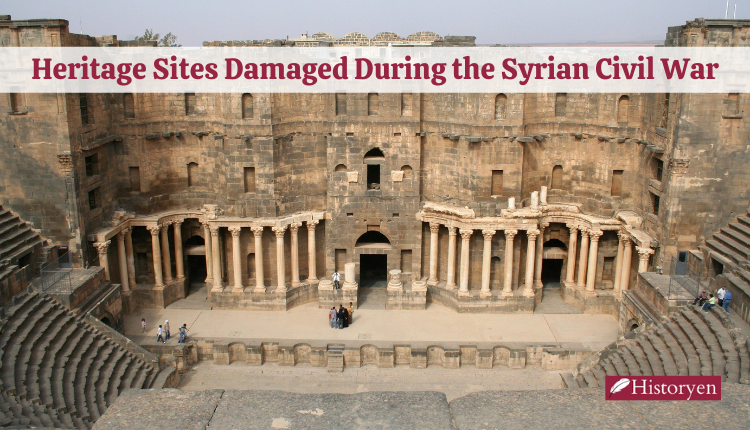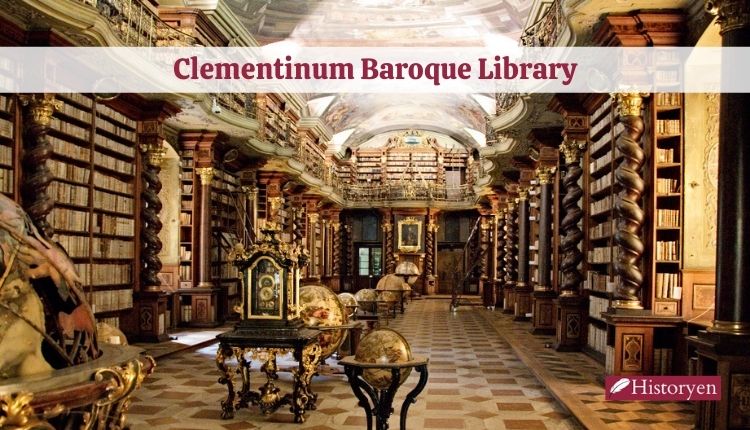Introduction
Welcome to the mystical world of the Jade Emperor Pagoda, a captivating and sacred place nestled in the heart of Vietnam. This article takes you on a journey to explore the rich history, stunning architecture, cultural significance, and spiritual worship that make Jade Emperor Pagoda a must-visit destination.
The History of Jade Emperor Pagoda

“The History of Jade Emperor Pagoda” takes us back to the early 20th century when this magnificent pagoda was constructed. Located in Ho Chi Minh City, Vietnam, the Jade Emperor Pagoda, also known as Chùa Ngọc Hoàng, holds a significant place in the country’s cultural and spiritual heritage.
The pagoda was built by the local Chinese community, reflecting their religious beliefs and devotion to Taoism. It was initially a small shrine that gradually evolved into the splendid structure we see today. The name “Jade Emperor” comes from the highest deity in Taoism, known as Yu Huang Shangdi, who is believed to rule over heaven and earth.
One of the captivating aspects of the pagoda’s history is the blend of Taoist, Buddhist, and Confucian influences that shaped its development. This amalgamation of beliefs is evident in the various statues, carvings, and altars found within the pagoda, representing different deities and mythical creatures from Chinese folklore.
Throughout its history, the Jade Emperor Pagoda has undergone renovations and expansions, with devotees and local communities contributing to its maintenance and preservation. The pagoda’s architectural style is a harmonious fusion of traditional Chinese design and Vietnamese aesthetics, making it a unique cultural landmark.
Today, the Jade Emperor Pagoda stands as a testament to the spiritual and cultural connections between the Vietnamese and Chinese communities. Its historical significance, coupled with its breathtaking architecture, attracts visitors from all around the world, seeking to experience the spiritual haven and cultural treasure that it represents.
The Architecture and Design of Jade Emperor Pagoda

“The Architecture and Design” of the Jade Emperor Pagoda is a captivating blend of intricate details, vibrant colors, and symbolic artwork that showcases the rich cultural heritage of Vietnam and the influence of Chinese architectural elements. Let’s delve into more details about this remarkable aspect:
1. Architectural Style: The Jade Emperor Pagoda exhibits a classic Vietnamese temple architecture style, with significant influences from Chinese design. The pagoda’s structure is a testament to the seamless fusion of these two cultural heritages, creating a unique and visually stunning place of worship.
2. Exterior Facade: The pagoda’s exterior is adorned with colorful, ornate sculptures and carvings that depict various mythical creatures, deities, and animals from Chinese folklore. These intricate details are often coated with lacquer to preserve their vibrant hues and protect them from weathering.
3. Roof Design: The pagoda’s multi-tiered roof is a hallmark of traditional Chinese architecture. Each tier is adorned with upturned eaves and intricate ceramic roof tiles, often in vibrant shades of green, yellow, and blue. The corners of the roof typically feature dragon figurines, symbolizing power and protection.
4. Main Hall: The main hall of the pagoda is the central point of reverence and devotion. Here, visitors can find an impressive statue of the Jade Emperor, adorned with colorful robes and a serene expression. The walls are decorated with elaborate frescoes that narrate stories from Chinese mythology and religious texts.
5. Altars and Shrines: Throughout the pagoda, there are several altars and shrines dedicated to various deities and spirits. Each altar has intricately designed wooden panels, lacquered carvings, and decorative elements that reflect the diverse spiritual beliefs observed by the Vietnamese-Chinese community.
6. Symbolism in Architecture: The entire architectural design of the Jade Emperor Pagoda is deeply symbolic. Elements like the dragon and phoenix represent yin and yang, symbolizing the balance between opposing forces in the universe. The imagery of mythical creatures and deities reflects the desire for protection, prosperity, and spiritual guidance.
7. Ancestor Worship: Ancestor worship is an essential aspect of Chinese culture, and the pagoda’s architecture pays tribute to this practice. Ancestral tablets and plaques are displayed within the pagoda to honor the ancestors of the local community, fostering a sense of continuity and reverence for their heritage.
8. Preservation Efforts: Over the years, the pagoda has undergone restoration and conservation efforts to preserve its architectural splendor. Local authorities and cultural organizations work diligently to maintain the pagoda’s authenticity and ensure that its unique architecture continues to stand as a testament to history and spirituality.
The Jade Emperor Pagoda’s architecture and design offer visitors an awe-inspiring journey through cultural symbolism and spiritual significance. Whether it’s the stunning rooflines, intricate carvings, or captivating frescoes, every detail reflects the profound connections between Vietnamese and Chinese traditions, making it an architectural gem and a significant cultural landmark in Vietnam.
The Festivals and Events Celebrated

“The Festivals and Events Celebrated” at the Jade Emperor Pagoda are vibrant and joyous occasions that bring the local community and visitors together to celebrate their cultural heritage and spiritual beliefs. Let’s explore more about these captivating festivals and events:
1. Lunar New Year (Tet): The Lunar New Year, also known as Tet, is one of the most important and grand celebrations at the Jade Emperor Pagoda. It marks the beginning of the lunar calendar and is a time for family reunions and paying respects to ancestors. During Tet, the pagoda is adorned with lanterns, colorful decorations, and flowers, creating a festive and jubilant atmosphere. Devotees and visitors come to offer prayers and burn incense for good luck and prosperity in the coming year.
2. Lantern Festival: The Lantern Festival is another significant event celebrated at the pagoda. It takes place on the fifteenth day of the first lunar month and signifies the end of the Lunar New Year celebrations. The pagoda’s surroundings are illuminated with a spectacular array of lanterns, creating a magical ambiance. People flock to the pagoda to enjoy traditional performances, dragon dances, and releasing lit lanterns into the sky as a symbol of hope and good fortune.
3. Buddha’s Birthday Celebration: The celebration of Buddha’s birthday is a momentous occasion at the Jade Emperor Pagoda. It takes place on the eighth day of the fourth lunar month and involves various religious ceremonies and rituals. Devotees gather at the pagoda to make offerings, chant prayers, and participate in processions to honor the birth of Gautama Buddha.
4. Mid-Autumn Festival (Tet Trung Thu): The Mid-Autumn Festival is a delightful event celebrated by families and children across Vietnam. At the Jade Emperor Pagoda, families come together to pay respects to deities, light candles, and enjoy traditional mooncakes. Children carry colorful lanterns and partake in lion dances, creating a lively and enchanting atmosphere.
5. Incense Offering Festivals: Throughout the year, the pagoda hosts various incense offering festivals, inviting worshippers to express their devotion and seek blessings from the deities. These festivals involve elaborate rituals, prayers, and the lighting of incense sticks, filling the pagoda with a fragrant and spiritual ambiance.
6. Cultural Performances: Apart from the religious ceremonies, the Jade Emperor Pagoda also hosts cultural performances and exhibitions to showcase the rich heritage of Vietnamese-Chinese arts and traditions. Visitors have the opportunity to witness traditional music, dance, and martial arts performances that add an extra layer of cultural significance to the pagoda’s festivities.
7. Commemorative Days: Certain days are dedicated to honoring specific deities or events, and the pagoda organizes special ceremonies to mark these occasions. Devotees gather to express gratitude and seek blessings from the deities associated with these commemorative days.
The festivals and events celebrated at the Jade Emperor Pagoda provide a unique and immersive cultural experience for visitors. The combination of religious ceremonies, cultural performances, and joyous gatherings fosters a deep sense of community and spiritual connection. For those seeking a truly enriching and vibrant experience, these festivities offer a glimpse into the heart of Vietnamese-Chinese traditions and their enduring significance in modern times.
Conservation and Preservation Efforts of Jade Emperor Pagoda

Conservation and Preservation Efforts” at the Jade Emperor Pagoda are vital to ensure the protection and longevity of this significant cultural and spiritual heritage site. The pagoda’s historical and architectural value, coupled with its cultural importance, necessitates ongoing efforts to safeguard its integrity. Here are more details about the conservation and preservation initiatives:
1. Restoration Projects: Over the years, the pagoda has undergone several restoration projects to address wear and tear, weathering, and structural issues. These projects aim to maintain the original beauty and authenticity of the pagoda’s architecture while using traditional construction techniques and materials.
2. Artwork and Artifact Preservation: The pagoda houses numerous valuable artworks, carvings, and religious artifacts that require special care and preservation. Conservation experts work diligently to protect these items from environmental damage, decay, and potential theft or vandalism.
3. Environmental Conservation: The surrounding environment of the Jade Emperor Pagoda plays a crucial role in its preservation. Measures are taken to maintain the cleanliness of the area and minimize pollution to prevent any adverse impact on the pagoda’s structures and artwork.
4. Visitor Education: Educating visitors about the importance of conservation is a crucial aspect of preservation efforts. Signages and informational materials are placed throughout the pagoda to raise awareness about the significance of protecting cultural heritage and the responsibility of visitors to respect the site.
5. Monitoring and Maintenance: Regular monitoring and maintenance are essential to identify any signs of deterioration or damage to the pagoda. This proactive approach allows conservationists to address potential issues promptly and implement necessary repairs.
6. Cultural Heritage Conservation Collaboration: Collaboration with local and national cultural heritage authorities is key to effective preservation. The pagoda works in partnership with relevant organizations and government bodies to develop comprehensive strategies and funding for conservation projects.
7. Community Involvement: The local community plays an integral role in the preservation of the Jade Emperor Pagoda. Engaging the community in the conservation efforts fosters a sense of ownership and pride, encouraging them to protect their cultural heritage.
8. Tourism Management: The management of tourism around the pagoda is carefully considered to minimize the impact on the site. Balancing the number of visitors, implementing responsible tourism practices, and regulating activities within the pagoda premises are crucial for long-term preservation.
9. Disaster Preparedness: Preparedness for natural disasters, such as earthquakes and floods, is an integral part of preservation efforts. Implementing measures to mitigate potential damage and having contingency plans in place ensure the safety and protection of the pagoda during emergencies.
By combining these conservation and preservation efforts, the Jade Emperor Pagoda continues to stand as a testament to Vietnam’s rich cultural heritage. Its significance as a spiritual haven and architectural gem is safeguarded, allowing present and future generations to connect with this remarkable piece of history and culture.
Conclusion
Jade Emperor Pagoda stands as a testament to Vietnam’s rich cultural heritage and spiritual legacy. With its awe-inspiring architecture, profound symbolism, and spiritual ambiance, it continues to captivate the hearts of those who seek its grace.



